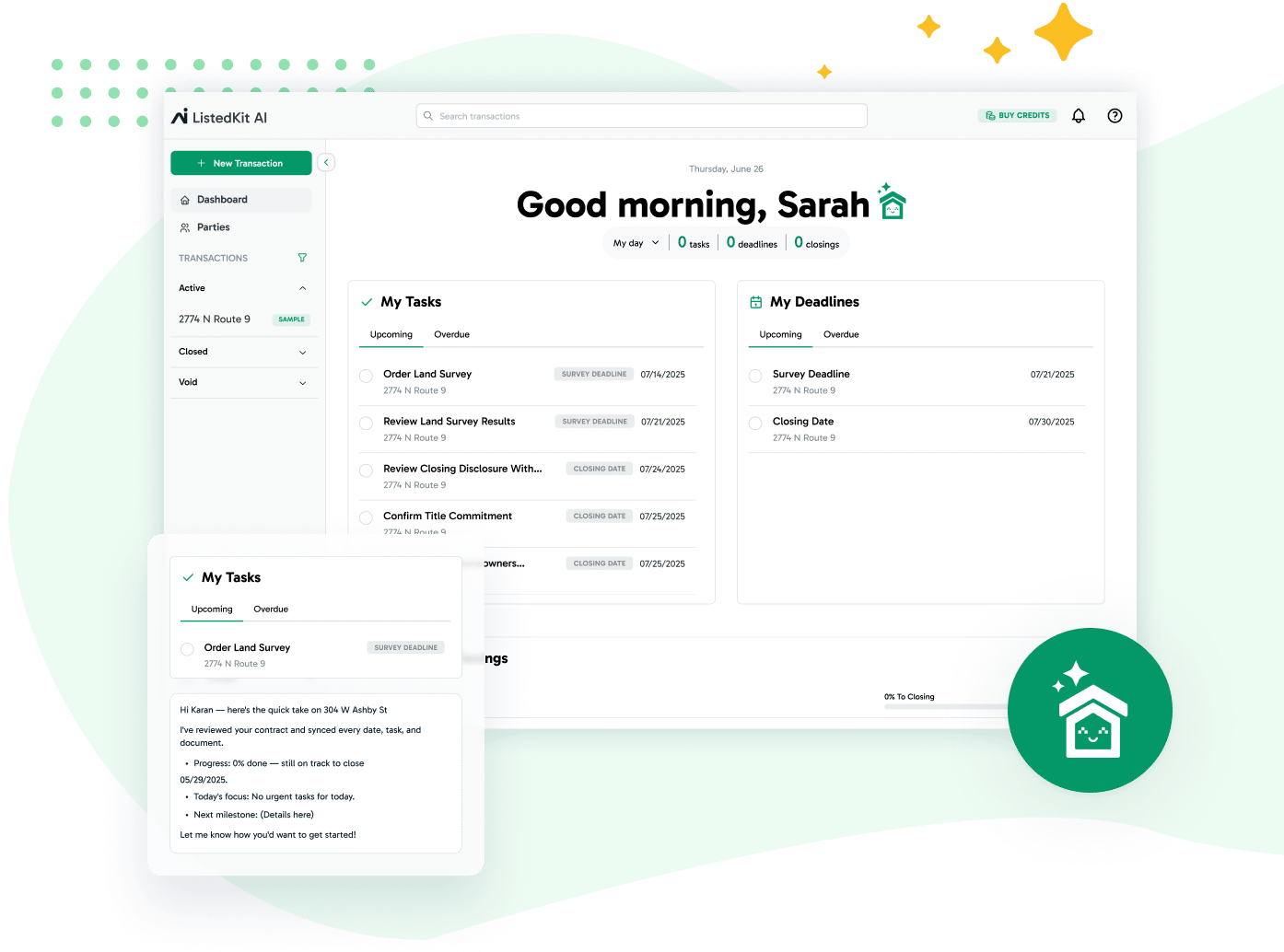Traditional home tours can limit access to a marketplace. Home buyers no longer rely on in-person tours to see the property, with increasingly more real estate being handled online.
Virtual property tours allow real estate professionals like you to reach a larger market and prospects, including international buyers. With this behavior change, buyers have begun to evaluate properties differently, with many choosing to buy a property even without seeing it in person.
This guide will detail how to make effective virtual property tours and sell them to a broader base.
The Growing Demand for Virtual Property Tours in a Globalized Market
According to LCP Media, real estate listings with virtual tours receive 87% more views than those without, proving buyers actively seek out this feature.
Additionally, Matterport reports that properties featuring immersive 360-degree tours sell 31% faster than those relying on static images alone.
Virtual tours should be part of your real estate marketing strategy to expand your reach, pre-qualify serious buyers, and close deals more efficiently.
Market Shift Toward Digital Experiences
The real estate market has evolved significantly, with buyers expecting digital experiences that provide a detailed view of a property before making any commitments. Virtual property tours offer an alternative to traditional photos and static images, giving buyers a more interactive experience that feels closer to a real visit.
Several factors have accelerated this shift:
- More buyers rely on online listings. Over 90% of home buyers now start searching online, meaning that listings with high-quality virtual tours gain a competitive edge over those with static images alone.
- Remote work has reshaped buyer behavior. Many potential buyers relocate for work and need virtual property tours to assess homes before scheduling personal visits.
- The demand for interactive features has increased. Buyers want 360-degree tours, video walkthroughs, and interactive floor plans to explore homes at their own pace.
Expanding International Buyer Access
For real estate agents, virtual tour platforms create opportunities to engage a broader audience, especially international buyers who can’t always attend physical viewings. These tours:
- Remove geographical boundaries. International investors can explore properties without travel costs.
- Provide a detailed look at property features. Buyers get an immersive experience, often with high-resolution photography and pre-recorded tours that showcase the home’s best aspects.
- Lead to informed decisions. Buyers can compare multiple properties remotely, filtering options before committing to viewing a person’s property.
Faster Sales and Pre-Qualified Leads
A well-executed virtual tour experience enhances buyer engagement and improves the selling process by attracting qualified leads who are serious about purchasing.
- Listings with immersive 360-degree tours receive more engagement and generate quicker sales compared to those using only traditional photos.
- Agents can spend more time with potential clients already invested in the property instead of conducting physical visits with unqualified leads.
- Buyers who explore a 3D model of the home often come prepared with detailed questions, leading to happier clients and successful sales.
How to Create an Effective Virtual Property Tour
Focus on these key areas to maximize engagement and showcase the property effectively.
1. Invest in High-Quality Equipment
The quality of a virtual tour will depend a lot on the tools used in its development. High-tech tools and high-resolution images will give future buyers a full view of property amenities and help them decide.
- Use professional cameras for high-quality images and high-resolution photography that make details stand out.
- Incorporate 360-degree photography to provide a full-room view, letting buyers explore spaces as if they were there in real time.
- 3D modeling and virtual reality technology create a more immersive experience, allowing buyers to “walk through” the property.
2. Focus on Interactive Elements
Adding interactive elements makes the tour more engaging and helps buyers connect with the space.
- Interactive floor plans allow buyers to click on different rooms to explore specific angles.
- Click-and-drag elements control viewing angles, giving buyers a better feel for space proportions.
- Background music and narrated video walkthroughs can make the experience more engaging, enhancing buyer preferences for the home.
3. Optimize for Mobile and Desktop Viewing
Most buyers browse real estate listings on mobile apps or desktop platforms. A virtual property tour should:
- Load quickly on all devices, ensuring a seamless experience.
- Maintain consistent interactivity across screens so a buyer exploring from a smartphone has the same experience as one on a laptop.
- Be easily shareable, allowing buyers to send email, text, or social media links.
4. Showcase Key Features
A high-quality virtual tour should highlight the home’s key benefits, making it stand out in the real estate market.
- Focus on high-end features like hardwood floors, office space, and floor-to-ceiling windows that appeal to luxury home buyers.
- Use close-up shots and detailed descriptions of property elements to draw attention to standout areas.
- Provide high-quality video walkthroughs with narration that guides buyers through the space.
5. Make Sharing Simple
For a virtual tour experience to be effective, it should be easy to distribute across multiple channels:
- Embed the tour on real estate listings and MLS platforms.
- Share the tour on social media to expand reach and engagement.
- Include links in email campaigns targeting potential leads.
The Role of Virtual Tours in Closing Deals
For out-of-state buyers, virtual property tours remove the barriers that once made cross-border home buying difficult. Here are some of the benefits they get from virtual tours:
Making Remote Purchases More Accessible
This type of buyers increasingly rely on virtual house tours to explore homes before scheduling a personal tour or making an offer. These tours provide:
- A reliable way to assess properties from abroad, saving travel costs and time constraints.
- A deeper level of confidence in the home’s layout and property features.
- A way for multilingual buyers to engage with listings without language barriers.
Managing Transactions Smoothly with Digital Tools
A virtual tour experience can convince a buyer, but the selling process isn’t complete until contracts are signed. ListedKit helps real estate professionals manage transactions efficiently by:
- Organizing digital files, agreements, and legal paperwork.
- Automating buyer follow-ups with follow-up forms and customer engagement tools.
- Simplifying payment processing for out-of-state buyers.
Reducing Time Zone Barriers
Scheduling personal showings for buyers can be difficult due to time constraints. Virtual showings solve this by:
- Allowing buyers to explore properties at their convenience.
- Providing pre-recorded tours that buyers can watch multiple times.
- Giving buyers access to video walkthroughs without needing an agent present.
Filtering Out Unqualified Buyers
Virtual property tours help you focus on serious buyers rather than hosting unnecessary physical viewings. These tours provide:
- A way to pre-screen potential clients, ensuring only committed buyers schedule in-person visits.
- A method to gauge buyer interest based on engagement with the virtual tour and follow-up questions.
- A time-saving approach for both agents and sellers by reducing unproductive house showings.
Marketing Strategies to Maximize Virtual Tour Reach
A well-executed virtual property tour is only effective if it reaches the right audience.
You must use strategic marketing techniques to boost visibility, attract potential buyers, and convert interest into offers. The right approach ensures that virtual experiences generate engagement across multiple platforms.
SEO Optimization for Online Visibility
A well-optimized virtual property tour will drive search rankings, and buyers will have an easier time finding the property.
- In titles and meta-descriptions, use relevant keywords such as “interactive floor plans,” “360-degree tours,” and “estate virtual experiences.”
- To maximize exposure, link the virtual tour to web listings, social networks, and electronic mail campaigns.
- Optimize video walkthroughs with keyword-filled captions and transcripts for search engine ranking improvement.
Example: A realtor showcasing an upper-bracket property for a virtual tour can embed a high-fidelity virtual tour titled “Explore This Beautiful 5-Bedroom Home with 360-Degree Views” and have it rank in search queries.
Leveraging Social Media Platforms
Social media is critical in real estate marketing, providing a space to share virtual experiences with a broader audience.
- Post virtual tour previews on Facebook, Instagram, and LinkedIn to attract engagement.
- Host live virtual events, allowing buyers to ask questions and request additional views in real time.
- Use targeted ads to promote virtual property tours to specific buyer demographics.
Example: A real estate agent could run a Facebook ad campaign showcasing a 360-degree property tour, targeting users searching for homes in that area.
Email Campaign Integration
Email remains an effective way to engage potential leads, keeping listings top-of-mind.
- Send targeted emails with pre-recorded video walkthroughs and links to the virtual tour experience.
- Use compelling subject lines like “Step Inside This Home Without Leaving Yours” to increase buyer engagement.
- Include clear CTAs encouraging recipients to schedule a person viewing or request more details.
Example: A real estate agent could send an email featuring a high-resolution photography tour of a home and an invitation to a live virtual event.
MLS and Third-Party Listings
Most real estate industry platforms now support virtual tour platforms, allowing listings to reach a wider audience.
- Upload high-quality virtual tours to MLS listings, ensuring they appear on major real estate websites.
- Use ListedKit email automation and client portal to keep track of potential buyers and keep them in the loop.
- Monitor your engagement metrics to refine marketing efforts based on buyer activity.
Example: A listing with a 360-degree tour on a major real estate platform like Zillow or Realtor.com can receive significantly more engagement. Buyers can explore the home virtually before reaching out, reducing unnecessary inquiries and increasing the likelihood of serious offers.
Sell to Buyers Anywhere with Virtual Property Tours
By integrating virtual experiences into your real estate marketing strategy, you can:
- Expand your reach to out-of-state and remote buyers who can’t attend personal showings.
- Pre-qualify serious buyers by allowing them to explore the property before committing to a physical viewing.
- Showcase properties effectively with 360-degree tours, video walkthroughs, and interactive floor plans.
- Market listings strategically through SEO, social media, email campaigns, and MLS platforms to attract potential buyers.
- Streamline remote transactions with ListedKit, real estate documents, tasks, and follow-ups.
The real estate market continues to shift toward digital experiences, and agents who use high-quality virtual tours will stay ahead.




